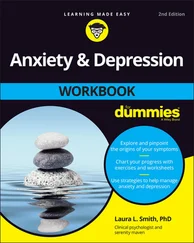1 ...8 9 10 12 13 14 ...19 Think of the brain as having many interconnected circuits. One circuit involves both the limbic system and the frontal lobes. To keep it simple, the limbic system is a primitive region of the brain and is responsible for immediate reflexive responses to threat. The thalamus and the amygdala form part of the limbic system. The frontal lobes, which handle judgment and reasoning, respond more slowly and thoughtfully.
When the brain perceives something as being dangerous, it immediately registers in the brain’s control center known as the thalamus. The thalamus rapidly sends a signal directly to the amygdala, which activates reflexive fear responses. Those responses prepare the body to fight or flee. The thalamus also delivers a warning signal through the frontal lobes. The frontal lobes, where rational thought occurs, take a little more time and use reason and logic to determine the veracity of the incoming threat. That’s why when you perceive something as being scary, your body immediately responds with a rapid heartbeat, tension, and dread. If and when the rational frontal lobes figure out that the scary thing actually doesn’t pose a significant threat, you calm down. That’s the way the brain is supposed to work.
For example, around the Fourth of July you hear loud popping sounds. Your limbic system may initially interpret those as gunshots, but your frontal lobes take a few seconds longer and conclude that the sounds are likely to be firecrackers. However, dogs, who don’t understand calendars or have well-developed frontal lobes, remain fearful.
In anxiety disorders, either the limbic system or the frontal lobes (or both) may fail to function properly. Thus, the limbic system may trigger fear responses too easily and too often, or the frontal lobes may fail to use logic to quell fears set off by the limbic system. When the brain signals danger, the body responds by getting ready for action. The next section explains the chemical aspects of fear.
Neurotransmitters help nerve cells communicate feelings, fears, emotions, thoughts, and actions through an intricate orchestration. Four major neurotransmitter systems and some of their functions include
The noradrenergic system, which produces norepinephrine and epinephrine. It also stimulates organs required in the fight-or-flight response (see the following section).
The cholinergic system, which activates the noradrenergic neurotransmitters and facilitates formation of memories.
The dopaminergic system, which is involved in movement and is also related to feelings of pleasure and reward. Dopamine disruptions cause problems with attention, motivation, and alertness, and appear to be quite important in the development of fear responses.
The serotonergic system, which is related to moods, anxiety, and aggression.
STRESS AND VULNERABILITY TO INFECTION
A significant body of research spanning decades of work has linked stress and susceptibility to infections. This finding appears to be due to reductions in immune response and increased inflammation in highly stressed individuals. A recent study reported in the British Medical Journal looked at large groups of people with stress disorders, their siblings, and a group of people without stress disorders from the general population of Sweden.
After following the subjects for over 25 years, researchers found that people with stress disorders were significantly more prone to infections, including life-threatening infections. The study controlled for economic factors, family background, prior medical history, and a host of other variables.
The study may have implications for new viral infections as they inevitably arise. People with high levels of stress may be more susceptible to becoming infected as well as have a more difficult time recovering than those with lower stress levels. Furthermore, some research suggests that people with high levels of stress may not benefit as much as others from vaccinations. Thus, managing stress and anxiety may improve important health outcomes. These findings may ultimately prove to be especially important during times of pandemics.
As these neurotransmitters pulse through your brain, the brain circuitry involved in fear and anxiety lights up. Your body then responds with a full-system alert known as the fight-or-flight response.
Preparing to Fight or Flee
When danger presents itself, you reflexively prepare to stand and fight or run like you’ve never run before. Your body mobilizes for peril in complex and fantastic ways. Figure 3-1 gives you the picture.

© John Wiley and Sons
FIGURE 3-1:When presented with danger, your body prepares itself to flee or stand and fight.
Your body responds to threats by preparing for action in three different ways: physically, mentally, and behaviorally.
Physically: The brain sends signals through your nervous system to go on high alert. It tells the adrenal glands to rev up production of adrenaline and noradrenaline. These hormones stimulate the body in various ways. Your heart pounds faster, and you start breathing more rapidly, sending increased oxygen to your lungs while blood flows to the large muscles, preparing them to fight or flee from danger.Digestion slows to preserve energy for meeting the challenge, and pupils dilate to improve vision. Blood flow decreases to hands and feet to minimize blood loss if injured and keep up the blood supply to the large muscles. Sweating increases to keep the body cool, and it makes you slippery so aggressors can’t grab hold of you. All your muscles tense to spring into action.
Mentally: You automatically scan your surroundings intensely. Your attention focuses on the threat at hand. In fact, you can’t attend to much of anything else.
Behaviorally: You’re now ready to run or fight. You need that preparation in the face of danger. When you have to take on a bear, a lion, or a warrior, you’d better have all your resources on high alert.
Granted, in today’s world, you’re not very likely to encounter lions and bears. Unfortunately, your body reacts too easily with the same preparation to fight traffic, meet deadlines, speak in public, and cope with other everyday worries.
When human beings have nothing to fight or run from, all that energy has to be released in other ways. So, you may feel the urge to fidget by moving your feet and hands. You may feel like jumping out of your skin. Or, you may impulsively rant or rave with those around you.
 Most experts believe that experiencing these physical effects of anxiety on a frequent, chronic basis doesn’t do you any good. Various studies have suggested that chronic anxiety and stress contribute to a variety of physical problems, such as abnormal heart rhythms, high blood pressure, irritable bowel syndrome, asthma, ulcers, stomach upset, acid reflux, chronic muscle spasms, tremors, chronic back pain, tension headaches, a depressed immune system, and even hair loss. Figure 3-2 illustrates the toll of chronic anxiety on the body.
Most experts believe that experiencing these physical effects of anxiety on a frequent, chronic basis doesn’t do you any good. Various studies have suggested that chronic anxiety and stress contribute to a variety of physical problems, such as abnormal heart rhythms, high blood pressure, irritable bowel syndrome, asthma, ulcers, stomach upset, acid reflux, chronic muscle spasms, tremors, chronic back pain, tension headaches, a depressed immune system, and even hair loss. Figure 3-2 illustrates the toll of chronic anxiety on the body.
Before you get too anxious about your anxiety, please realize that chronic anxiety contributes to many of these problems, but we don’t know for sure that it’s a major cause of all of them. Nevertheless, enough studies have suggested that anxiety or stress can make these disorders worse to warrant taking chronic anxiety seriously. In other words, be concerned, but don’t panic.
Читать дальше


 Most experts believe that experiencing these physical effects of anxiety on a frequent, chronic basis doesn’t do you any good. Various studies have suggested that chronic anxiety and stress contribute to a variety of physical problems, such as abnormal heart rhythms, high blood pressure, irritable bowel syndrome, asthma, ulcers, stomach upset, acid reflux, chronic muscle spasms, tremors, chronic back pain, tension headaches, a depressed immune system, and even hair loss. Figure 3-2 illustrates the toll of chronic anxiety on the body.
Most experts believe that experiencing these physical effects of anxiety on a frequent, chronic basis doesn’t do you any good. Various studies have suggested that chronic anxiety and stress contribute to a variety of physical problems, such as abnormal heart rhythms, high blood pressure, irritable bowel syndrome, asthma, ulcers, stomach upset, acid reflux, chronic muscle spasms, tremors, chronic back pain, tension headaches, a depressed immune system, and even hair loss. Figure 3-2 illustrates the toll of chronic anxiety on the body.










